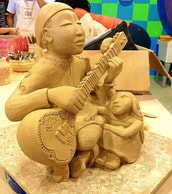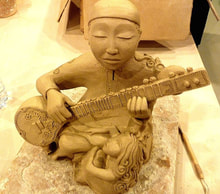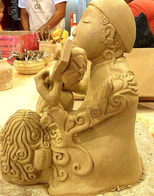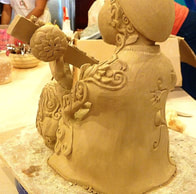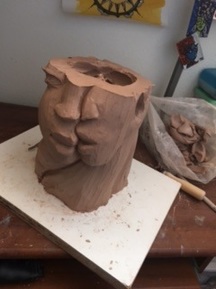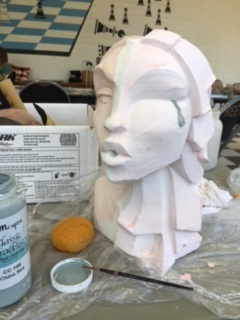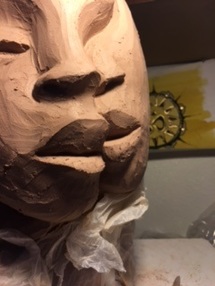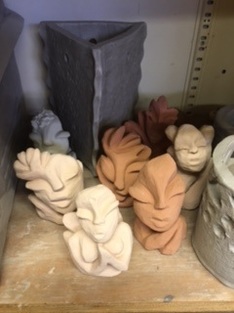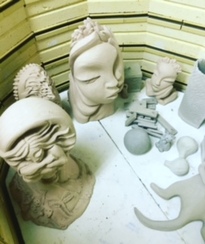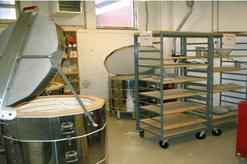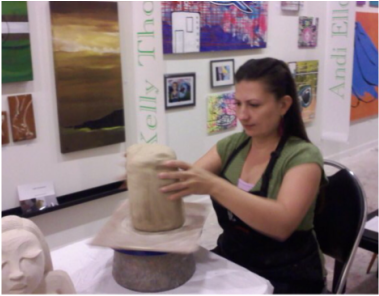The Sculpting Process
Sculptures take up to two months to complete from start to finish. Tess sculpts mostly in water based clay. She begins by building from a solid piece and then once it is complete, the entire sculpture is cut up into pieces.
Next the inside must be hollowed out. It must be delicately carved on the inside of each piece, making sure that there are no spaces thicker than half an inch.
It is then put back together and has to be re-sculpted it. It is a unique and time consuming process, but is necessary for her style, since most sculptures are not preconceived.
Once the sculpture has dried (which can take up to a few weeks), it is fired in a bisque fire. When it comes out of the kiln and is cooled down, then it is ready to be glazed. After a glaze color is chosen, she hand paints the sculpture. It is then fired once again in a higher temperature. She awaits the final product, hoping that it comes out without any cracks and that the color has come out correctly.
Many factors can play a part in the way a glaze comes out. They often don't turn out the way you were expecting. It has to do with the heat of the kiln, the placement of the piece in the kiln, the thickness of the glaze and many other factors.
When working with clay an artist never knows exactly what to expect or how the piece will turn out.
The featured sculpture is a commissioned piece named 'Adoration'. It is about the love shared between father and child. It took over two months to complete because it was very delicate and detailed. It was an apprehensive firing period because of the very thin neck on the Sitar instrument.
Next the inside must be hollowed out. It must be delicately carved on the inside of each piece, making sure that there are no spaces thicker than half an inch.
It is then put back together and has to be re-sculpted it. It is a unique and time consuming process, but is necessary for her style, since most sculptures are not preconceived.
Once the sculpture has dried (which can take up to a few weeks), it is fired in a bisque fire. When it comes out of the kiln and is cooled down, then it is ready to be glazed. After a glaze color is chosen, she hand paints the sculpture. It is then fired once again in a higher temperature. She awaits the final product, hoping that it comes out without any cracks and that the color has come out correctly.
Many factors can play a part in the way a glaze comes out. They often don't turn out the way you were expecting. It has to do with the heat of the kiln, the placement of the piece in the kiln, the thickness of the glaze and many other factors.
When working with clay an artist never knows exactly what to expect or how the piece will turn out.
The featured sculpture is a commissioned piece named 'Adoration'. It is about the love shared between father and child. It took over two months to complete because it was very delicate and detailed. It was an apprehensive firing period because of the very thin neck on the Sitar instrument.
